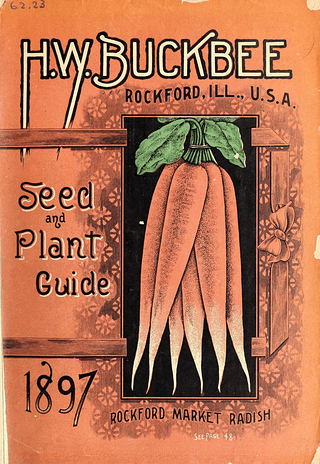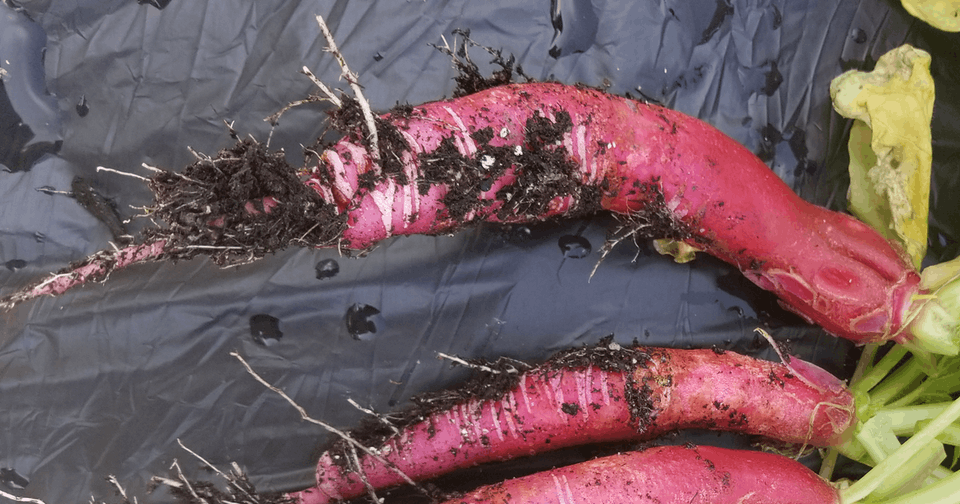
Podcast: Play in new window | Download (Duration: 16:49 — 13.7MB)
Subscribe: Google Podcasts | Spotify | Android | RSS | More
 Earlier this summer, I learned about a talk at the annual conference of the American Society for Horticultural Science. The press release said it “holds all the intrigue of a murder mystery and all the painstaking, arduous pursuit of an archeological dig, along with a touch of serendipity”. And it concerned the rediscovery of a kind of radish that in its day was extremely famous. My kind of mystery. Naturally I had to talk to the sleuth cum Indiana Jones, Dr Gary Bachmann. Before I did so, though, I did a bit of digging of my own so that I’d be able to contribute a clue myself.
Earlier this summer, I learned about a talk at the annual conference of the American Society for Horticultural Science. The press release said it “holds all the intrigue of a murder mystery and all the painstaking, arduous pursuit of an archeological dig, along with a touch of serendipity”. And it concerned the rediscovery of a kind of radish that in its day was extremely famous. My kind of mystery. Naturally I had to talk to the sleuth cum Indiana Jones, Dr Gary Bachmann. Before I did so, though, I did a bit of digging of my own so that I’d be able to contribute a clue myself.
The rediscovery of the radish that put Long Beach, Mississippi, on the map raises all kinds of questions for vegetable sleuths, amateur and professional. Can you identify a variety beyond reasonable doubt? Does that even matter, if the culprit matches the suspect closely enough? And how many radishes would fill a boxcar?

Notes
- There are a few suppliers of Cincinnati Market radish out there, plus just about every combination of the words long, scarlet, cincinnati and radish. I’d get it from the US National Plant Germplasm System, but like I said, I’m a bit obsessive about these things.
- Photo of the radish itself from Gary Bachmann.
- Resurrecting lost vegetables is not restricted to keen gardeners. Local communities do it too, recovering varieties that they gave to genebanks and later lost. And genebanks work with other genebanks in search of national varieties that they may have lost. During his time at the Nordic Genebank, Svein Solberg’s team repatriated 329 varieties from the Vavilov genebank in Russia.
- Music by Black Keys Bob Stevenson. I have no idea who Black Keys Bob Stevenson is, but I thank him and the Internet Archive.

Fascinating episode. And yes, I have sautéed radishes in butter. It was really quite delicious.
Nice one Jeremy – loves it!👍🏻💥🔥🙏🏻
eatthispodcast.com/radish/ gives you a bit more than 30 seconds of #Mississippi #radish #history to listen to and enjoy. https://t.co/JY2J3VoYU
Radish redux eatthispodcast.com/radish/?utm_so…
A very British baked bean.
Hopefully it will prevent the sort of malnutrition for which there is archaeological evidence from Romano-British times.
Although they did have lots of nice meat.
“…differences in height by season of birth may not be due to climate-related fluctuations in nutrition or infections…” after all. No, not in Roman Britain.
Recovering Israeli wheat landraces.
Recovering a lost beer-snack radish.
New Zealand’s genebank in the news.
The cool uses of potato wild relatives.
Is there anywhere apart from Germany where #radishes are served as bar snacks with #beer? Tweet @EatPodcast if you can help. eatthispodcast.com/radish/#t=0
Resurrecting a a lost vegetable eatthispodcast.com/radish/ #genebanks
In which @EatPodcast goes all Indiana Jones on a radish eatthispodcast.com/radish/